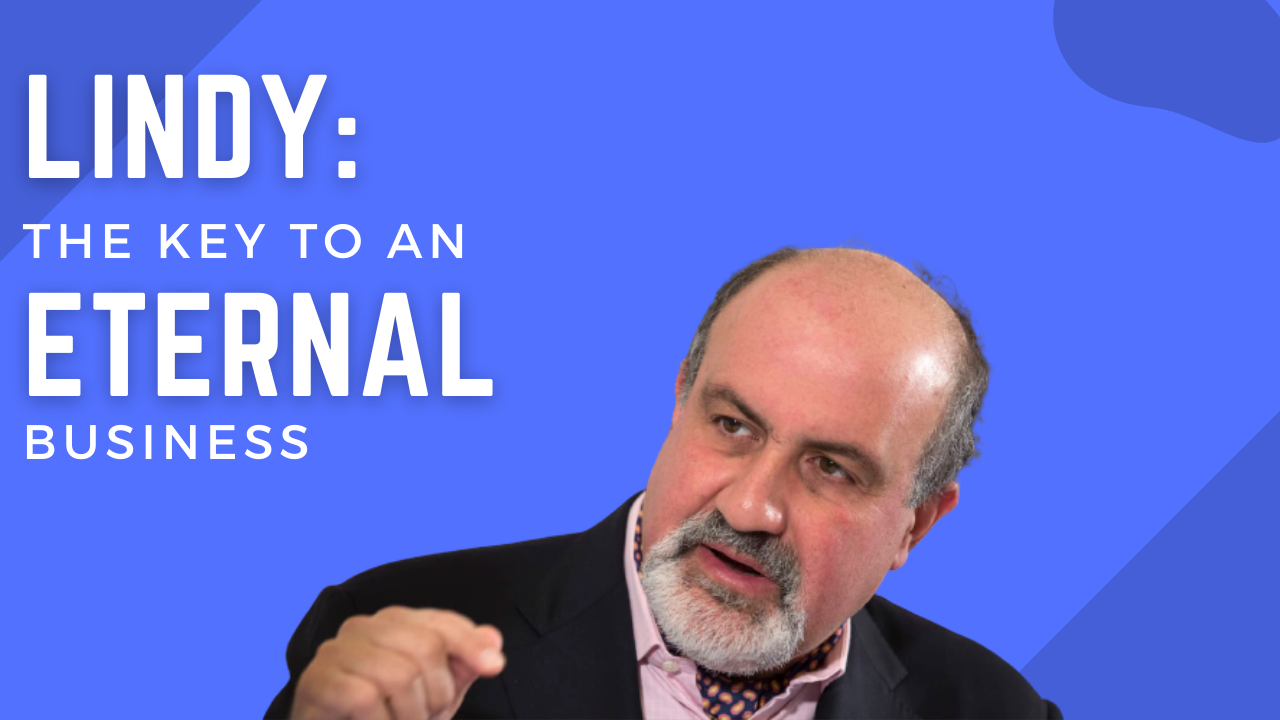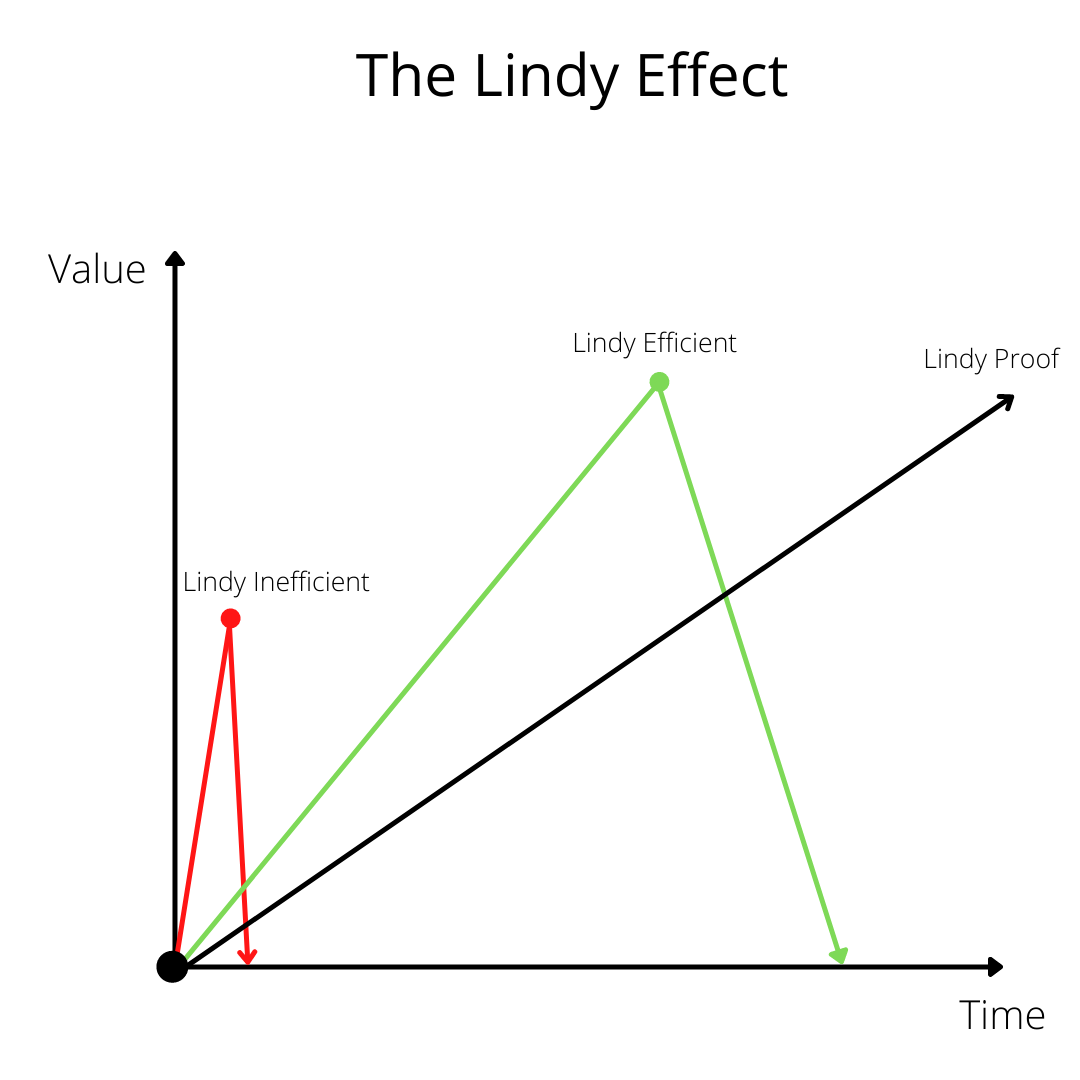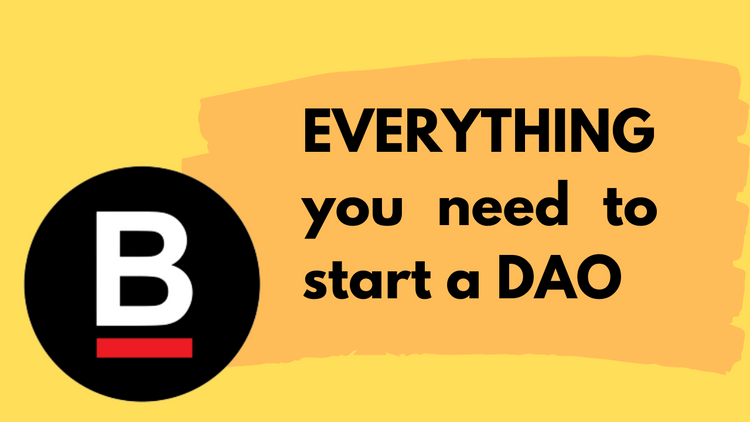Lindy: The key to an eternal business

Origins
The concept was born in the 1960s in New York, where comedians would discuss post-mortems of their latest performances and discuss future opportunities. They frequently did this at a deli, named Lindi’s. They’re observations about their durability in show business were eventually developed by a mathematician by the name of Benoit Mandelbrot who stated that, "However long a person's past collected works, it will on the average continue for an equal additional amount. When it eventually stops, it breaks off at precisely half of its promise."
Elements
Put simply, if a book is in print for 40 years, it can be expected to exist for another 40 years, and in 10 years, it can be expected to exist for another 50 years (Thanks Nassim Taleb). Crucially, at the 50 year mark, if it were not to make it another 50 years, it would perish at 25 years.
There are several caveats and flaws to this thinking. First, it’s when a non-perishable object/concept is in decline using the Lindy effect. This doesn’t really help us. Secondly, it’s hard to tell if dilution is factored in here. Take the radio for example. Something far past its prime, but it’s still here. Its loitering in our cars, refusing to die. Right now it seems to be an immovable object, but it is hardly in its prime.
Opportunities - Being Lindy Proof
For every Lindy effected entity, there is a more Lindy-proof alternative.

Being Lindy-proof as Marc Andreesen points to in his reading habits, involves reading timeless works, and completely up to date material (like the news for example). If you were to develop this into first principles thinking for a business (and as a consequence your investments), there are two questions that you should be asking:
- What is the problem that needs solving?
- What is the best way to deliver the solution?
The answer to the first question should only change if you come up with a better answer. It’s ideal if it doesn’t change. The second question, is how your business evolves.
Jeff Bezos and Warren Buffett have made extraordinary amounts of money by concerning themselves with the question: “What won’t change in the next 10, 20 or 100 years.” This is Lindy-proofing their business to a high level by trying to find the already timeless solutions to human wants and needs. If they are wrong, it’s relatively easy for them to pivot.
Elon Musk is almost the opposite in that he is creating the timeless solutions. The best example is Neuralink, where he is essentially creating a ‘bicycle for the mind’ like Steve Jobs set out too. A pretty timeless tool, and Elon is trying to maximise the efficiency of the interface, by actually putting it in our bodies. A pretty scary thing to think about for most people, but he points out that we are already ‘cyborgs’ in the era of smartphones. Our ability to communicate, interact, navigate and think are already influenced by the subtle forces behind what we see on our feeds and apps. He is merely making the bridge between our brain and our mechanic brain much more efficient - that’s the delivery





